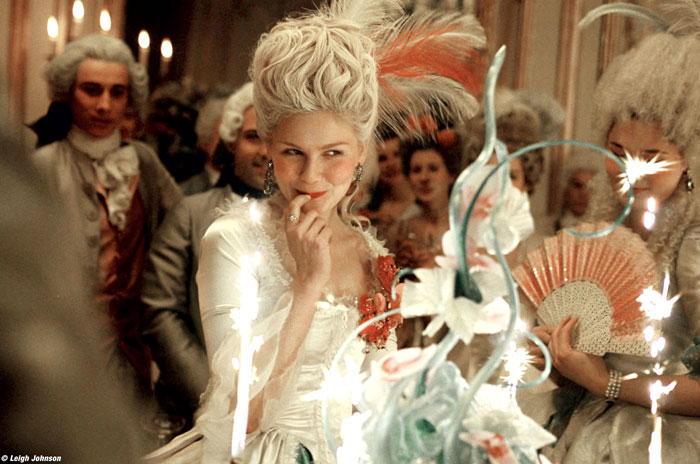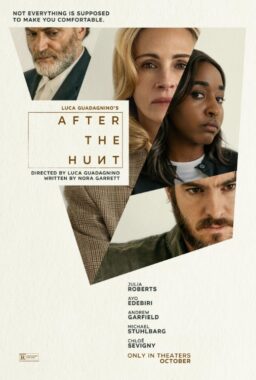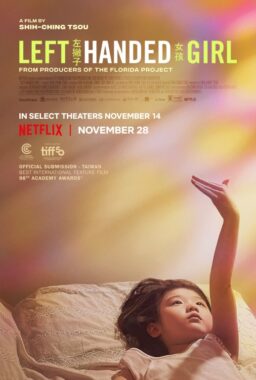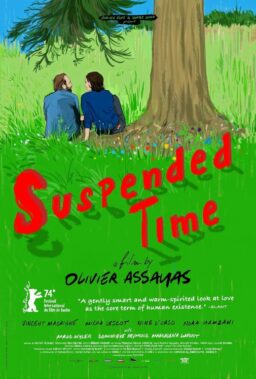Film festivals allow you to get way ahead on your movie viewing. At Sundance, Cannes, Telluride and Toronto you can see movies that will be released throughout the coming year and into the next. That’s what Roger Ebert does every year, and here are some of the movies he’s already written about for the next few months, into November….
SUMMER
“Quinceanera”
One of the strongest and most touching films in the competition is “Quinceanera,” by Wash Westmoreland and Richard Glatzer. It tells the story of a 15-year-old Mexican-American girl in the Echo Park district of Los Angeles. Like the wonderful 2002 film “Real Women Have Curves,” it’s about a generation gap between parents and children, about the challenge of being in love and remaining a virgin, and about an extended circle of family and friends. There is rich human comedy here, and sadness, and a portrait so textured that we get very involved.
Emily Rios stars as Magdalena, whose 15th birthday milestone is approaching, and who knows her father isn’t rich but hopes she can have a Hummer stretch limo like her best friend for her own quinceanera (a traditional celebration of a Latina’s 15th birthday). Then she becomes pregnant while technically still a virgin (“My sperm sure can swim,” her boyfriend observes ruefully). Her father banishes her from the family home, and she finds refuge with her great-grandfather, played by Chalo Gonzalez with such warmth and wisdom that this is surely one of the best performances of the year. The story also involves her cousin (Jesse Garcia), who gets involved with the yuppie gays who are their landlords. Life lessons are learned in a film that is serious, joyful, and filled with heart. (Sundance 2006)
The big evening hit at the Eccles was Patrick Stettner’s “The Night Listener,” an eerie, Hitchcockian thriller starring Robin Williams as a gay late-night disk jockey whose publisher friend (Joe Morton) asks him to read a manuscript about a young boy (Rory Culkin) tortured by his parents and now dying of AIDS under the care of a foster mother in Wisconsin (Toni Collette).
The Williams character is depressed by the breakup of a long-term love affair, and gets involved by telephone in the life and death story of the boy. But the more he finds out, the more questions are raised, until the movie takes turns that no one in the audience can anticipate. The screenplay is by Armistead Maupin and Terry Anderson, based on Maupin’s novel, and is scary, fascinating, and elusive.
Williams pursues versions of reality in a series of events that grow nightmarish. This is a movie that ends more than once, in more than one way. (Sundance 2006)
SEPTEMBER
“Conversations with Other Women“
“Conversations with Other Women” is another of the best films I have seen here. Directed by Hans Canosa, it stars Aaron Eckhart and Helena Bonham-Carter in an idea that seems like a stunt and then deepens into the sadness of unrealized love. The stunt is that that entire film has been made in split-screen, so that we are always looking at two pictures. The left is usually occupied by Eckhart, the right by Bonham-Carter, although they are free to enter each other’s frames and sometimes seem to be standing so close that the frame division is a formality; other characters sometimes enter either frame.
They meet at a wedding. She is a “substitute bridesmaid.” They talk. They flirt. They spend the night together. The nature of their complete relationship I will leave for you to discover. The movie is really about the passage of time and the finality of decisions taken and not taken — about the loneliness of men, who seem condemned to regret what they have not had, and women, more content to accept what they have chosen. The two actors are talking for almost the entire movie, which depends on tone and pitch to sustain its deepening insights. The split screen comes to seem necessary. (Telluride 2005)
Since 1968, the MPAA Code and Ratings Administration has been an anonymous group enforcing secret guidelines on almost all movies seeking release in America. The difference between its R and NC-17 ratings can mean life or death for a movie. A rating can be appealed — to another anonymous group, also with guidelines that are never made clear. The board’s founder and great defender, Jack Valenti, explained for years that the movie raters were “ordinary parents” with young children, trying to advise other parents on how appropriate movies might be for younger viewers.
That mysterious cloak of secrecy was ripped asunder (to use Valenti’s beloved hyperbole) here at Sundance Wednesday night, with the premiere of Kirby Dick’s new documentary “This Film Is Not Yet Rated,” a devastating attack on the MPAA’s ratings and how they are administered. Yes, it’s one-sided, especially in the way Dick sidesteps a good point that Valenti makes: The national ratings system headed off the threat of countless local censor boards. But the system penalizes many non-pornographic but adult-themed movies, and is administrated inconsistently behind a bewildering smokescreen. (Sundance 2006)
OCTOBER
Ahmad is a sad man whose wife has died and whose in-laws will not let him see his son. His career as a singing star is long forgotten. He gets up at three every morning, stocks his cart, and pulls it through the streets. He makes friends with a Spanish woman who is filling in for a relative at a nearby magazine stand. She likes him. But can he see a future for himself?
[Director Ramin] Bahrani said one of the inspirations for his film was The Myth of Sisyphus, by Albert Camus. That’s the story of a man who spends his life rolling a heavy rock up a hill, only to see it roll back down again. The life of Ahmad resembles the plight of Sisyphus. At the end of the film, we see him helping a friend pull a cart through the streets. “Two Men Push Cart,” I guess. Is this progress? Is it reason for hope? (Sundance 2006)
“Marie Antoinette” is an ambitious film, visually splendid, with some of the most elaborate costumes in movie history, and the real Versailles as a location. Kirsten Dunst’s performance is perfectly suited to [director Sophia] Coppola’s view of the role: Marie Antoinette as an unschooled 14-year-old princess from Austria, wed to the future Louis XVI (Jason Schwartzman) and marooned in the sadistic rituals of the French court (she is dressed and undressed with a roomful of courtiers; in bed on their wedding night the newlyweds are blessed by an archbishop and given a pep talk by her father-in-law, Louis XV).
The movie shows husband and wife paralyzed on the brink of sex for months, maybe years, until Marie’s brother (Danny Huston) visits Versailles and explains the conjugal mysteries to Marie’s husband in terms of the young man’s favorite hobby, locks and keys. Versailles is a court sealed against real life; Parisians starve and riot, while Marie shops, parties, gambles, and fools around with a Swedish count who is an expert locksmith.
All of these qualities in the film are real and tangible, and have a fascination. Yet I sensed a vague dissatisfaction not only at the lack of a guillotine, but at pacing which lingers over the early years of Marie’s marriage and then hastens toward a conclusion it never quite seems to reach. The film doesn’t fail, but neither does it triumph. (Cannes 2006)
“Shortbus“
Another sensation here is “Shortbus,” the long-awaited, much-rumored explicit erotic film from John Cameron Mitchell (“Hedwig and the Angry Inch”). It’s an official selection, playing out of competition. Yes, there’s hard-core sex in this film (gay, straight, solo, amateur, professional and all of the above). But you couldn’t call it a hard-core film.
It just doesn’t feel like one, and despite all the genitals on the screen it doesn’t try to be one; it’s not about sex but about sexuality, not about scoring but about living, and at its center is a remarkable performance by Sook-Yin Lee as Sofia, a sex therapist (“I prefer the term Couples Counselor”) whose search for her own first orgasm leads her into the gay, bi, trans and S&M underworld of New York. It is a world that seems so gentle and friendly in this film that I overheard a strange comment afterwards, “This is the first time New York has seemed Canadian.” (Cannes 2006)
NOVEMBER
“Fast Food Nation”
“Fast Food Nation” was written by Eric Schlosser, author of the best-seller of the same name, and directed by Richard Linklater, the brilliant Austin-based director of “Waking Life,” “Slacker,” “School of Rock,” “SubUrbia,” “Tape” and “Dazed and Confused.” It is not a documentary, but a fact-based dramatization using parallel stories. One involves Greg Kinnear as fast food marketing executive on a fact-finding mission; his boss asks him to investigate reports that fecal matter is being found in the chain’s hamburgers. The other is about undocumented Mexicans supplied as low-salaried employees in a vast food processing plant where not all the legs sliced off belong to cows.
The movie is not sensational, unless we consider factual footage of cattle being slaughtered on an assembly line to be sensational, and why should we? That’s how most of America’s meat gets to most of America’s meat-eaters. The film has no special statement to make on “guest workers” in terms of the current national debate: It simply observes how they are imported (at their own cost) and supplied as cheap labor to a meat factory where Americans are not keen to work.
The film produces a great sadness and a greater queasiness. It is not about heroes, but about ordinary working people. There is a conversation between the Kinnear character and a key supplier of meat (Bruce Willis) that in its quiet, factual ruthlessness is probably just about how such people discuss such matters. The Willis character argues that there has always been a lot of stuff in meat besides meat, and if the burgers are grilled at a high temperature, what’s the difference? (Cannes 2006)
The greatest disappointment so far this year is an easy choice: “Southland Tales,” the much-anticipated new film by Richard Kelly, whose “Donnie Darko” inspired much enthusiasm. This one is a “fiasco,” writes Variety’s Todd McCarthy, and he is not being unkind, only truthful.
Running an unendurable 161 minutes, it’s an apocalyptic mess set in Los Angeles of the near future, where “neomarxists” and other neos, all of whom seem like retro retreads from the 1960s, stage an incomprehensible revolution. There’s an all-star cast, headed by The Rock, Sarah Michelle Geller, Mandy Moore, Wallace Shawn, Justin Timberlake, and Janeane Garofolo, who plays a uniformed general who stands inside a bookstore on Venice Beach and has inexplicable telephone conversations for obscure purposes with unestablished characters she never seems to meet. (Cannes 2006)












